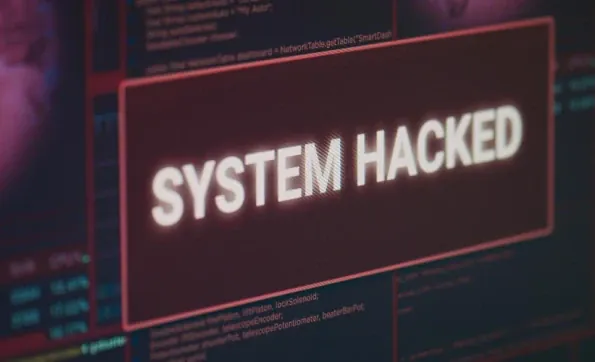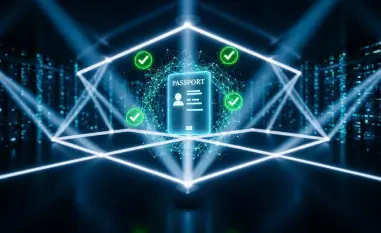The modern era of hacktivism is characterized by the convergence of political, ideological, religious, and nationalistic motivations with sophisticated cybercrime practices. Hacktivist groups, which began as low-skill collectives engaging in symbolic digital protest, have evolved into highly skilled, agile teams capable of substantial damage. This comprehensive analysis explores the motivating ideologies, organizational structures, tactical methodologies, and potential state influences that drive contemporary hacktivist activities.
Defining Hacktivism
Hacktivism is a portmanteau of “hacking” and “activism,” representing digital interventions driven by sociopolitical motivations. Initially, hacktivist actions were akin to vandalism — the digital equivalent of graffiti. Now, they pose significant threats by exploiting advanced hacking skills for ideological purposes. Hacktivist motivations can be broadly grouped into four categories: ideological, political, nationalistic, and opportunistic. This transition from digital graffiti to powerful cyber assaults showcases the evolution and growing threat of hacktivism.
Once denounced as mere nuisances, these digital activists have grown into formidable opponents. Their methods are no longer just about sending a message—hacktivists now aim to disrupt, expose, and sometimes even destroy targeted systems. As hacktivists wield more sophisticated techniques, distinguishing their actions from those of traditional cybercriminals becomes challenging. Understanding the underlying motivations can provide essential insights into their tactics and help institutions better defend against potential cyber threats.
Ideological Motivations
Hacktivism is predominantly underpinned by ideology, with groups targeting entities that oppose their worldview. Diverse sociopolitical landscapes, such as the Russia-Ukraine and Israel-Hamas/Palestine conflicts, reveal hacktivists’ deep-rooted ideological divides. Prominent examples include NoName057(16), GlorySec, GhostSec, CyberVolk, Indian Cyber Force, SiegedSec, KromSec, People’s CyberArmy, and We Red Evils. These groups target entities based on their ideological stances, often aligning with broader geopolitical conflicts.
For instance, NoName057(16) directs its efforts to support pro-Russian sentiments while condemning Ukraine. Conversely, GlorySec takes a stand against Russia and its allies, supporting Western societies in its campaigns. GhostSec pushes for a free Palestine by opposing Israeli policies, whereas CyberVolk advocates for jihad to liberate Palestine. Indian Cyber Force, meanwhile, focuses on labeling Pakistan as a terrorist state and targets Pakistani interests. This ideological drive isn’t limited to regions in conflict but spreads to various areas, reflecting broader ideological battles happening globally.
Political Motivations
Political hacktivism seeks to impact government policies and influence political outcomes. Groups like SiegedSec, GlorySec, and NoName057(16) have conducted operations targeting political entities and initiatives. For instance, SiegedSec targeted Project 2025, opposing conservative policies, while GlorySec launched the #OpPRC initiative against Chinese interests. These actions demonstrate the intersection of hacktivism with political activism, aiming to sway public opinion and policy decisions.
This specific type of hacktivism often focuses on critical junctures in political processes, such as elections, major political campaigns, and significant policy announcements. The ultimate goal is to create a political atmosphere that aligns with the hackers’ beliefs and ideologies. For example, NoName057(16) conducted DDoS attacks supporting Taiwan, standing against China’s stance in the region. By leveraging their technological skills, they intend to act as catalysts for change, drawing attention to issues they perceive as critical and rallying support around their causes.
Nationalistic Motivations
Nationalistic hacktivism promotes or defends specific national interests, often utilizing patriotic rhetoric and cultural symbols. Groups like Team UCC amplify Hindu voices and defend Indian cyberspace by targeting entities perceived harmful to Hindus. Various pro-Russia groups use nationalistic symbols to justify their actions, with groups like Server Killers and RipperSec carrying out attacks against countries opposing Russia. This form of hacktivism reflects a blend of patriotism and digital activism.
Nationalistic hackers not only seek to damage foreign networks but also strive to control the narrative around national identity and sovereignty. This is evident in the way these groups brand their campaigns using national symbols and language meant to invoke patriotic fervor. For instance, pro-Russia groups often employ symbols like Russian flags and bears to emphasize their national pride and dedication to the country’s interests. Such symbolism not only fosters unity within their ranks but also garners support from the broader public who share their nationalistic sentiments.
Opportunistic Motivations
Opportunistic hacktivism involves targeting easy breaches, primarily for demonstration rather than ideological reasons. Groups like SiegedSec have hacked websites and applications, claiming simplicity and vulnerabilities as reasons. This type of hacktivism is driven more by the thrill of the hack and the opportunity to showcase skills rather than a specific ideological or political agenda.
These opportunistic hackers might not have a deeply rooted mission, but their actions can still cause significant disruptions. Their activities highlight vulnerabilities that, while exploited for demonstration, could have dire consequences if targeted by more malicious actors. This aspect of hacktivism showcases the diversity within the movement, where motivations can range widely from deep-seated ideological beliefs to simple opportunism. The motives might be less profound, but the damage can be quite real, emphasizing the need for robust cybersecurity measures across all sectors.
Overlapping Motivations
Certain groups move beyond a singular focus, aligning with multiple causes for diverse reasons. For example, People’s CyberArmy supports Russia in Ukraine but aligns with wider adversarial agendas against Israel, Ukraine, and NATO. Cyb3r Drag0nz holds a pro-Hamas, anti-Israel stance, while global entities generally align against regional adversaries. Religious lineups also play a role, with Muslim-aligned groups supporting Hamas and groups like Team UCC opposing Pakistani Muslim causes.
This intersection of motivations can make it challenging to pin down the exact driving force behind certain hacktivist activities. It also illustrates the fluid nature of hacktivist alliances and the potential for shared resources and tactics among different groups. The blending of various motivations means that hacktivist groups can be agile, shifting focus as situations evolve globally. This adaptability can enhance their effectiveness, making them more formidable opponents in the ever-changing landscape of cyber warfare.
Hacktivist Methodologies
Hacktivists employ an array of tools and methods to achieve their objectives, including DDoS attacks, web defacements, hack-and-leak operations, infrastructure hacking, and, to a lesser degree, malware. These methods vary in complexity and impact, reflecting the evolving capabilities of hacktivist groups. The diversity in tactics helps these groups retain an element of surprise and adapt to different targets and defenses.
Web defacement, for example, serves as a digital form of protest, visibly altering the target’s online presence to convey a message or discredit the opponent. Defacing a prominent website can quickly attract attention to the group’s cause, spreading their message far and wide. Likewise, hack-and-leak operations involve the extraction and public dissemination of confidential data, often aiming to embarrass or undermine the target. This approach indicates a higher level of sophistication among hacktivists, moving beyond mere disruption to a calculated effort to expose and damage their opponents reputationally.
DDoS (Distributed Denial-of-Service)
DDoS remains a staple tactic for hacktivists due to its simplicity but limited impact. Examples include Indian Cyber Force’s attacks on Hamas sites. This method involves overwhelming a target’s online services with traffic, rendering them inaccessible. Although DDoS attacks can be mitigated with proper defenses, the sheer volume of these attacks can still cause significant disruptions.
The ease of executing DDoS attacks makes them an attractive option for many hacktivist groups, especially those with limited resources. Despite their simplicity, when coordinated effectively, these attacks can cripple targeted websites and services, disrupting operations and causing substantial inconvenience. They serve as a powerful statement, demonstrating the hackers’ ability to control the accessibility of key digital infrastructure, even if only temporarily. This disruption can be particularly impactful when timed strategically, such as during high-traffic periods or critical events.
Web Defacement
Hacktivism today isn’t just about making a statement; it’s about achieving tangible outcomes that align with a broader set of motivations. Groups that were once only able to deface websites or share unsanctioned information have now developed the expertise to launch sophisticated cyber-attacks. These attacks can disrupt critical infrastructure, steal sensitive data, and propagate their message on a global scale.
Furthermore, state actors might be leveraging these groups for their own purposes, blurring the lines between independent activism and government-backed initiatives. Understanding the complex web of motivations and tactics behind modern hacktivism is crucial for addressing its evolving threat. By exploring their ideological drivers, organizational setups, sophisticated strategies, and potential state affiliations, we can better comprehend and respond to the substantial impact hacktivism has on today’s digital landscape.













